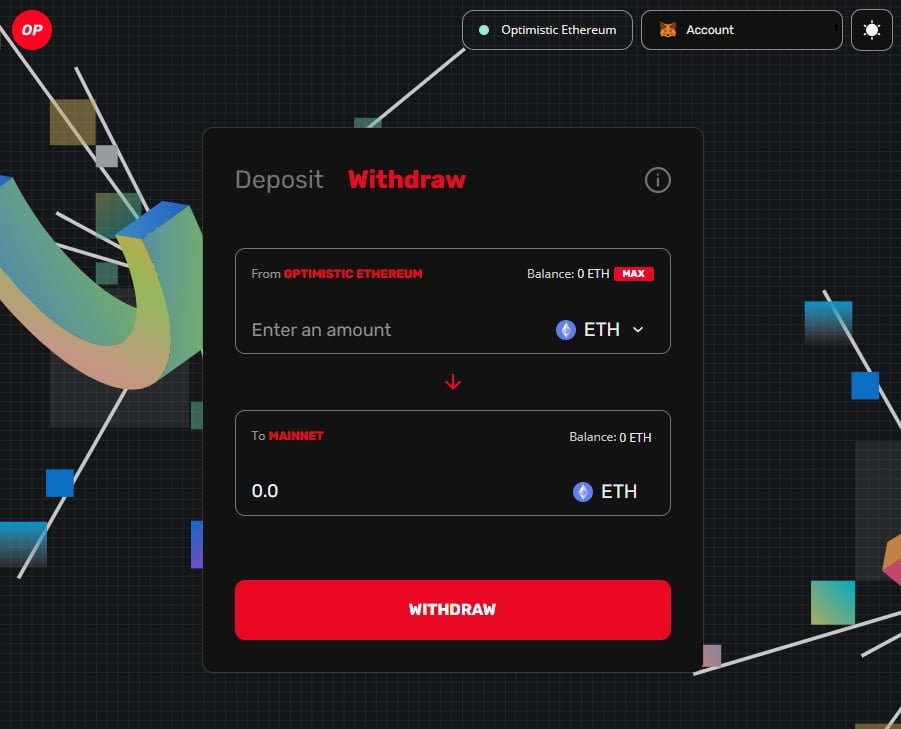

Optimism’s main competitor is Arbitrum, a similar network that managed to launch about a month earlier. Optimism isn’t even the only chain using optimistic rollups. The Optimism Foundation essentially invented rollups, but it’s far from the only working Layer 2 network. As soon as your account is verified, you should be able to deposit fiat currency (USD, EUR) or another crypto and start trading.
OPTIMISM CRYPTO LICENSE
Generally, this process requires your address, driver’s license (or other valid I.D.) and Social Security number. Before you can start trading, you will need to set up an account and verify your identity if you haven’t already. The best exchanges that offer it are Coinbase Global Inc. Optimism is available on quite a few major trading platforms, despite how new it is.
Customer service response time could be improved. Since then it has slowly improved its network and attracted more applications and users. However, soon after it launched in 2021, it got one of the top apps on Ethereum, Uniswap, to port over. It took a few years for the Optimism Foundation to build the Optimism network. Plasma was created by two of the most important developers in the cryptocurrency world: Vitalik Buterin, the visionary and co-founder of Ethereum, and Joseph Poon, the co-founder of the Bitcoin Lightning Network Layer 2 protocol. It was born out of one of the first Layer 2 technologies called Plasma. The Optimism Foundation has been around for a lot longer than that too. The Optimism token is extremely new having been released May 31st 2021, but the Optimism blockchain has been out for about a year. It is not yet known exactly how the Foundation will distribute citizenship, only that the Token House and the Citizens House will be involved in the process. It will mostly vote on retroactive public goods funding. The Citizens House will be made up of holders of a special non-transferable non-fungible token (NFT). The Token House (made up of OP holders) will vote on project incentives, protocol upgrades and treasury funds. Instead, it decided to split its governance between two co-equal chambers: the Token House and the Citizens House. The Optimism Foundation believes that these kinds of simple token governance fall apart because of misaligned incentives and excessive centralization. The proposal is then voted on by token holders and if it passes, it is implemented. Anyone who wants to make a change or addition to the protocol (mostly the developers themselves) submits a proposal detailing it. They generally look like shareholder votes for public companies but with a touch more decentralization. However, the governance system is different from most blockchains and decentralized applications. It’s the governance token for the Optimism protocol. The token will only have one main use beyond price speculation. Many investors will buy OP to bet on the success of the Optimism network. Until ZK rollups can be developed further, general-purpose optimistic rollups like Optimism will likely reign as the top Layer 2 rollup chains. ZK proofs are extremely fast and secure but are much harder to build and especially difficult to generalize. ZK rollups use complicated cryptographic proofs called ZK proofs to validate every transaction one by one. Optimistic rollups assume that every transaction is valid, and they rely on network participants to submit fraud proofs to roll back invalid transactions. They mostly work the same way, but they use different proofs to validate transactions in the rollup. Rollups fall into two categories: optimistic rollups (developed by the Optimism Foundation) and ZK (zero-knowledge) rollups. 
Assuming the rollup is built correctly, it should be almost as secure as the Layer 1 chain. However, rollups still publish a small amount of state data (transactions, account balances) to the safer, more decentralized Layer 1 network to be validated. This solution might seem like it’s just moving the problem to another less-trusted blockchain, which sacrifices security and decentralization. Rollups move a large majority of transaction data and computation off the Layer 1 chain. The team behind Optimism, The Optimism Foundation, invented one of the most important kinds called rollups. Optimism is a Layer 2 network, a kind of blockchain built on top of another blockchain (called a Layer 1 network) to speed up transactions and reduce fees.īrilliant developers have come up with many different ways to build Layer 2 networks. Scaling has been the top hot-button issue in the cryptocurrency space for years, ever since transaction fees on Ethereum started to skyrocket.






 0 kommentar(er)
0 kommentar(er)
